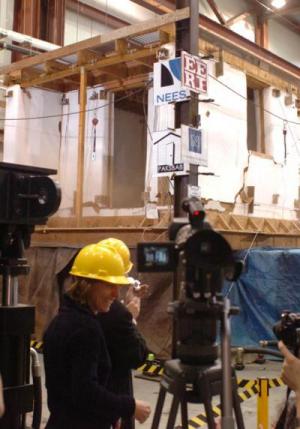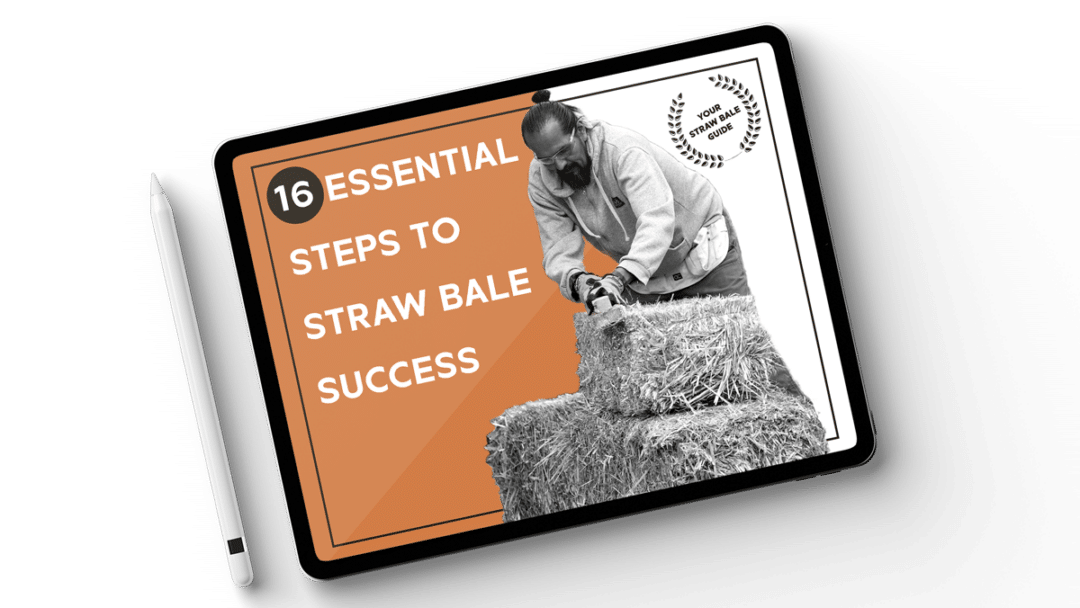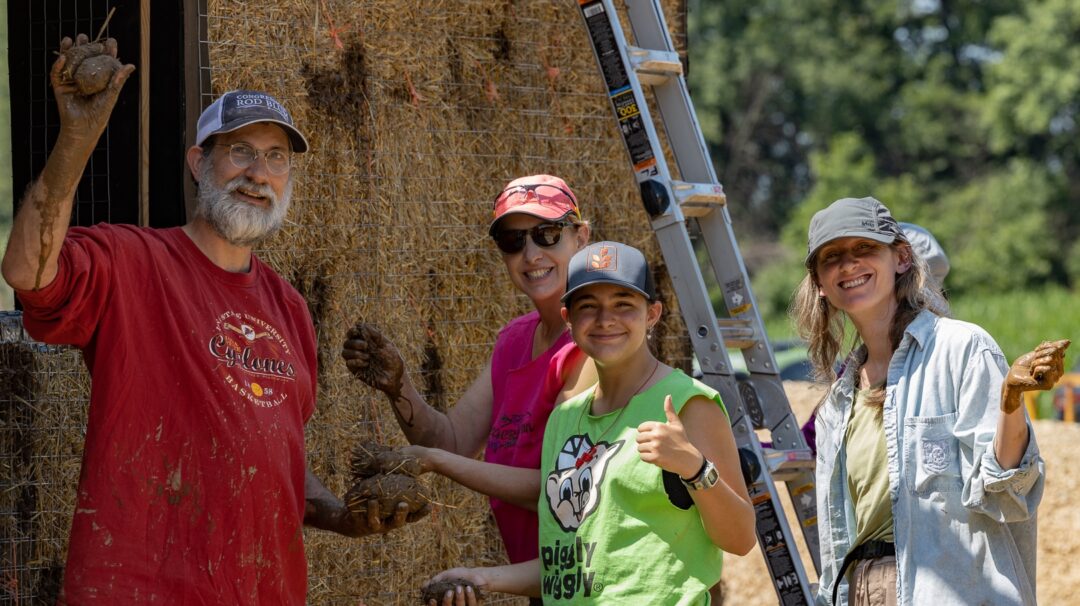 Straw Bale Wall Performance in Earthquakes
Straw Bale Wall Performance in Earthquakes
Here’s a great article about the effectiveness of straw bale walls in earthquakes. This study shows how strong they really are by subjecting the 14’x14′ straw bale house to 200 percent more shaking than was seen in the Northridge, CA earthquake of 1994, which holds the largest measured ground acceleration in the world.
Straw Bale House Survives Violent Shaking At Earthquake Lab
ScienceDaily (Apr. 5, 2009) It huffed and puffed, but the 82-ton-force, earthquake-simulation shake table could not knock down the straw house designed and built by University of Nevada, Reno alumna, and civil engineer Darcey Donovan.
The full-scale, 14-by-14-foot straw house, complete with gravel foundation and clay plaster walls, the way she builds them in Pakistan, was subjected to 200 percent more acceleration/shaking than was recorded at the 1994 Northridge, Calif. earthquake, the largest measured ground acceleration in the world. After a series of seven increasingly forceful tests, in the final powerful test, the house shook and swayed violently, cracked at the seams, and sent out a small cloud of dust and straw … and remained standing.
Donovan oversaw the successful series of seismic tests run on March 27 at the University’s world-renowned Large-Scale Structures Laboratory. She was testing her innovative design for straw bale houses she has been building since 2006 throughout the northwest frontier provinces of Pakistan, in the foothills of the Himalayas between Pakistani tribal areas and Kashmir. Her design uses bales as structural and load-bearing components rather than just insulation as in other straw-bale designs.
“We’re very pleased with the results,” said Donovan, founder/CEO of the non-profit Pakistan Straw Bale and Appropriate Building (PAKSBAB) organization. “The house performed exceptionally well and survived 0.82g (0.82 times the acceleration of gravity) and twice the acceleration of the Northridge quake. The Geological Survey of Pakistan estimates the 2005 Kashmir earthquake to have had peak ground accelerations in the range of 0.3 to 0.6g.
Most people were killed and injured in that October 2005 earthquake as they slept when their poorly built houses collapsed on top of them. The magnitude 7.6 earthquake killed 100,000 people and left 3.3 million homeless or living in tents.
“Our goal is to get the largest number of poor people into earthquake-safe homes. We want to make it as affordable as possible so they build a safe home. We want to save lives.”
“Straw bale houses are used around the world, but those have posts and beams for support and rely on energy-intensive materials, skilled labor, and complex machinery, making it unaffordable for the poor,” Donovan said. “In our design, the straw bales are the support, and not just for insulation. Our design is half the cost of conventional earthquake-safe construction in Pakistan. The materials we use , clay soil, straw, and gravel, are readily available; and we utilize unskilled labor in the construction.
“We build a small, steel compression box, pack it with straw, which is readily available from the Punjab District, literally stomp on it to compress it, add a little more, stomp on it a little more, and then finally use standard farm-type hand jacks to do the final compressing of the bales,” Donovan said.
The site-fabricated bales are not as wide as straw bales used in a typical straw bale building, and the fishing-net reinforcement and gravel-bag foundation are nonconventional.
“We fill old vegetable sacks with gravel, like sandbags, for the foundation. The bags are fully encased, or boxed, in a mortar made from clay soil and cement. It’s as low-tech as possible using indigenous, affordable materials,” she said. The earthquake-safe buildings are 80 percent more energy efficient than modern conventional buildings at 50 percent of the cost. Her group also trains local residents how to build straw bale homes.
“Our system is different than anything ever tested,” she said. “We’re doing seismic research on the house to have data to show its structural integrity.” While there are no building codes in the region, Donovan and the organization she founded, PAKSBAB, are pursuing an endorsement from Pakistan’s newly formed Earthquake Reconstruction and Rehabilitation Authority.
Scientists will analyze the seismic-testing results, and Donovan will write a detailed report and seismic design and construction recommendations to be published in the Earthquake Engineering Research Institute’s World Housing Encyclopedia.
Donovan has been a practicing engineer since 1986. She has a bachelor of science degree in mechanical engineering from Stanford University, a master of science in civil engineering from the University of Nevada, Reno, and is a licensed Professional Civil Engineer.
The research was conducted at the Network for Earthquake Engineering Simulation Consortium, Inc. (NEES) shake-table site at the University of Nevada, Reno as a NEES Management, Operations and Maintenance award shared-use project.
==================================
“I am extremely grateful to EERI, NEES, and UNR for their generous support and to all the hardworking volunteers who dedicated countless hours to this project, Donovan said.
The non-profit PAKSBAB relies on donations and grants to continue its work. For more project information, visit http://www.paksbab.org.
==================================
Adapted from materials provided by the University of Nevada, Reno, via EurekAlert!, a service of AAAS.

 Straw Bale Wall Performance in Earthquakes
Straw Bale Wall Performance in Earthquakes

3 Responses
Hi Andrew. Great report! Would love to get my hands on a copy of the official test process and results if and when it is available. More good data to use in support of code-approved SB buildings up here in Canada!
Best regards, Steve.
Hi mr. Andrew. I writing now from Mongolia. So thanks for you e-lesson . For me some problem with english therefore joined with you through transletor-my freind.
Best regards,Ulziibat
G ‘ day Steve
You will find a link on our web site to the paper on the method of the test done by Darcey Donovan of PAKSBAB from Nevada. Just scroll down to the stories on the test I think the link is in the first story I put up.
Regards John Glassford.